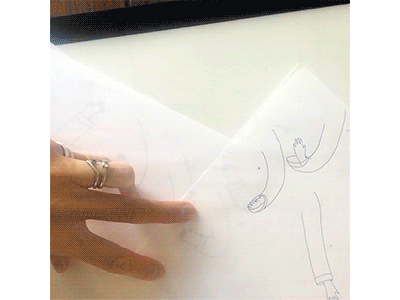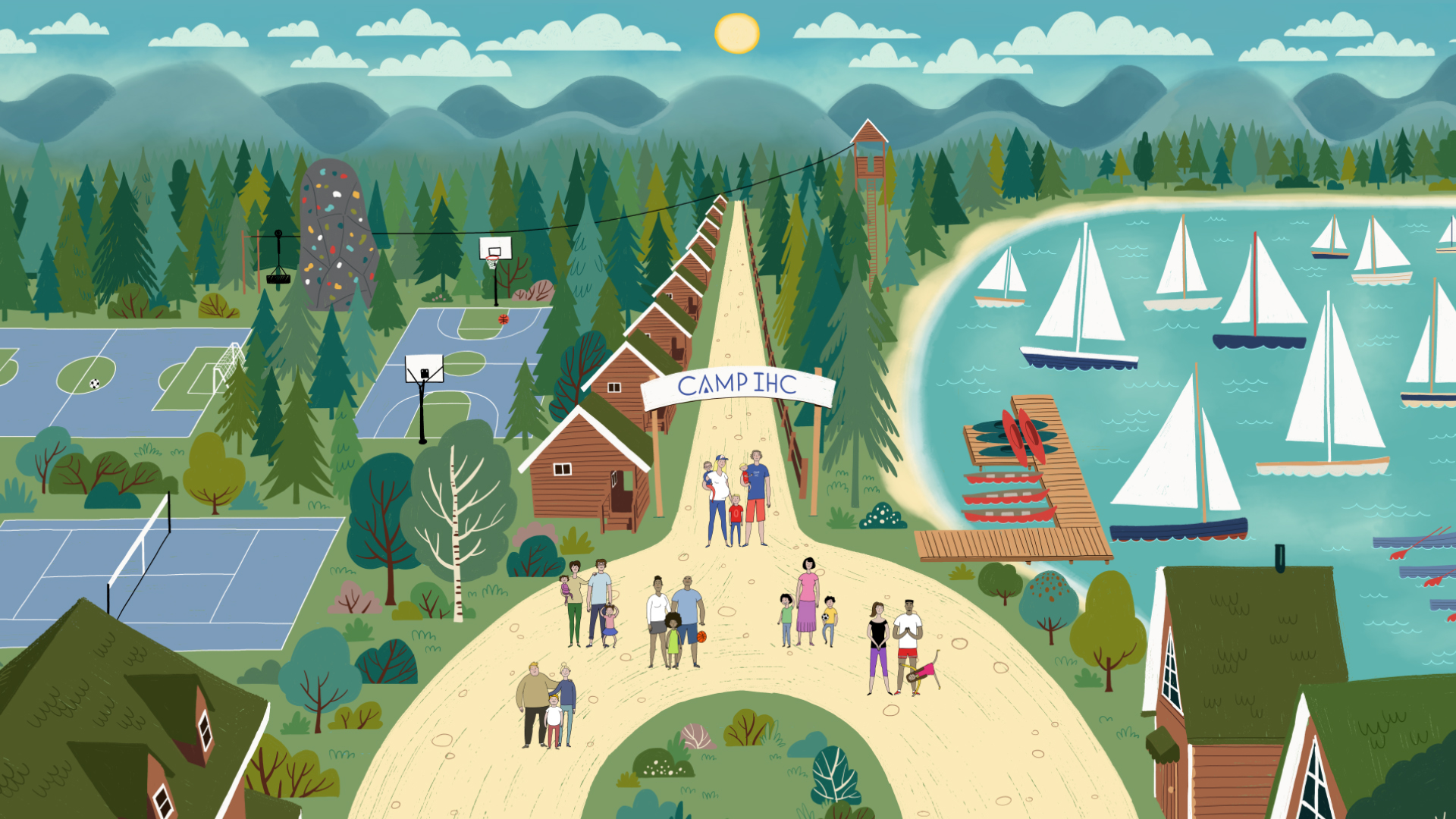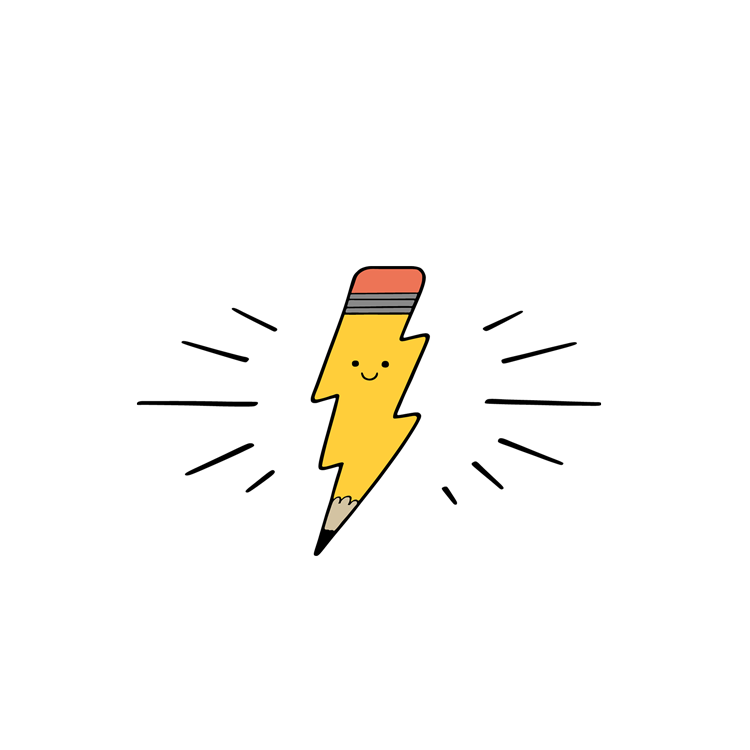
← How long does animation take to make?
26 September 2022 in Process
The answer to this question throws lots of variables and tangents and spaghetti into the air, so we’ll try piecing this all together for you in one blog.
Let’s start with some basics…
There’s lots of different types of animation and they all have different methods… traditional animation (hand-drawn/cell), digital 2D or 3D animation, motion graphics, and stop motion.
Here at Superdoodle we produce our animations using a mixture of traditional hand drawn illustration and 2D digital work. We use pencils and pens and computers to transform our initial rudimentary squiggles on paper into fantastical digital worlds. If the animation only requires objects to move in a simple fashion, we use our fancy computer programs to make this happen but if we want a character to catch a ball, for example, we do this frame-by-frame, creating a new illustration for each arm movement. Working frame-by-frame of course takes a lot longer to do.

On average…
Depending on the platform it’s being used for, animation tends to be created at 24 frames per second. We switch between working on ‘ones’ or ‘twos’ depending on the movement required, which means creating 12-24 different illustrations per second.
As a rough rule of thumb, an animator might complete around 4 seconds of frame-by-frame animation per day, but of course there is a big difference in the amount of work between animating 20 cowboys having a bar brawl and one tortoise munching on a slice of lettuce.
Because we carefully record all of our working hours, we have good historical information on how long our animations take. So here are some examples from some of our past projects to give you some understanding of timescales:
‘The Power Of Empathy’
Length of animation: 02.53 (incl start and end credits)
Time taken to create: 30 working days
‘Blame’
Length of animation: 03:15 (incl start and end credits)
Time taken to create: 30 working days
‘Meditation 101: A Beginner’s Guide’
Length of animation: 02:01 (incl start and end credits)
Time taken to create: 24 working days
‘Why Mindfulness Is A Superpower’
Length of animation: 02:33 (incl start and end credits)
Time taken to create: 36 working days
‘How Mindfulness Empowers Us’
Length of animation: 02:09 (incl start and end credits)
Time taken to create: 42 working days
What’s involved in creating an animation?
You can read more about our project process HERE, or if you’d like a simplified version, here’s a list outlining the different stages in a typical animation project:
Script work: the narrative of the animation, and/or what will be said in the voice over.
Visual script work: a script referencing the narrative/voice over, outlining what we’ll be seeing on screen.
Character design: Pencil sketches are discussed and then fully fleshed coloured characters are developed.
Background design: Can range from a plain colour to a detailed illustrated scene and anything in between!
Storyboard: rough illustrations planning the action and camera angles for each shot in your animation. Imagine a simple pencil-sketched comic strip.
Animatic: a video of the storyboard frames, presented alongside the audio of your animation. Its purpose is to demonstrate timing, flow and pace alongside key movements and transitions.
Animation.
Music added (if required).
Sound effects added (if required).
Subtitles (if required).
Exported in numerous formats (if required).
What are the time/price variables?
There are ways to make animation production faster, and ways to add in more bells and whistles for those with larger budgets. We’ve separated these variables into low and high budget extremes and will leave you to work out where your project might fit on the scale.
Pre-production
High budget: As this pre-production stage is the brainstorming session that develops the final animation, some clients choose to focus a fair amount of time/budget on this stage. We can spend as much time as the client would like/need on every element of pre-production, including rounds of script work, character and background design work, and storyboard and animatic work.
Low budget: If you are able to come to us with a ready-to-go developed script, then we would work on a visual script and character design (usually a day or two depending on back-and-forth). With a script and visual element presented at the end of this stage, some clients are happy for us to proceed straight into animating, saving money by eliminating the need for a storyboard or animatic.
Character Design
High budget: With higher budgets we can look at details, such as flowing hair for a dramatic movement. Clothes with pockets and accessories. Animals with fur detail. All of these additional features provide depth and interest to the animation that make those viewing it happy to watch it over and over again and to notice new things each time they do.
Low budget: Keeping things simple is necessary for lower budgets. This doesn’t mean that quality is lost, it’s all about thinking smartly about design. Hair that doesn’t flow for example, so a funky bob or a top bun. Tighter clothing that means no extra movement ie leggings or a tight tee.
Number of characters
High budget: One squillion characters. OK, maybe that’s too many.
Low budget: Of course, each character requires time to be birthed, drawn up, coloured, and then animated, and fewer characters mean smaller timescales/budgets. Having two main characters, for example, doubles the amount of character work, as each character needs each element of their body to be animated, and facial expressions considered, etc. If you need a scene with some background characters however, there could be ways to have them sway or do some simple head movements, for example, to keep costs down but keeping that feeling of movement going.
Background Design
High budget: There’s always plenty of opportunity to add in some fantastic detail here. We love love love textures so if there’s room in the budget for experimentation we love nothing more than whipping out our colouring pencils, watercolour paints or camera to develop some beautiful worlds for our characters to live.

Low budget: There are certainly solutions to make the animation look good with little to no time taken up on the background at all – even a plain white/coloured background can work in animation, depending on what you’re going for. We’ve also used paper textures as a simple backdrop that doesn’t put any weight onto the project timescale/budget.

Script considerations / Movement complexity
High budget: Working frame by frame means that we can have our characters do whatever they’d like! Spin around in 3D space, jump up into the sky, swim in the deep oceans, moon walk across a sugar cube in a river of tea… our options are limitless.

Low budget: Even if our script says that the “character walks from the pub to the kebab shop” there are ways to reduce costs with this. Instead of having a full shot of the character walking, which would mean complex frame by frame legs and arm movements (probably some drunk stumbles included), we could do a close up shot of the character’s shoulders and head bobbing up and down instead. And then a cut scene to the kebab shop. Hooray! This would mean needing to animate just the head bobbing slightly, and we can move the body across digitally. There are small “cheats” like this that will save heaps of time but will still produce a glorious narrative, it just needs to be considered during pre-production.

Animation Length
Many of our clients come to us with scripts that are between 3 and 10 minutes in length. Although we are happy to animate any length video, we often encourage shorter scripts to grab and hold our audience’s attention. Although there’s some amazing stats proving the success of video marketing, users these days want to consume content quickly; 33% of viewers will stop watching a video after 30 seconds, 45% by one minute, and 60% by two minutes… although we like to believe our viewers want to stay and watch to the end of our animations – however long they might be! 🙂
Our clients often have a lot that they want to highlight and cover with their initial scripts. And this is where a focus on solid pre-production work comes in. A carefully crafted script, combined with a compelling and sometimes humorous visual narrative is obviously the key to conveying the messaging effectively. We are happy to work with you on this, and to show you how a lot of the points you want to make, along with some humour can be brought out in the visuals.
Extras
High budget: There’s plenty of ways to make your animation shine, including adding sound effects and a groovy little music track to keep your toes a-tappin’ and your interest levels up. Further considerations could include adding subtitles for people with hearing difficulties, or subtitles in other languages if the animation is to be screened internationally. We can also export our animations in lots of different formats for different platforms (YouTube, Instagram, TikTok, TV, etc.).
Low budget: We have an ever-growing supply of sound effects that we are more than happy to provide for free, we only ask that our time is covered laying them over the animation.
Wrapping it up!
When asked “How long does an animation take to make” / “How much does an animation cost”, we want to be as clear as we can, setting expectations from the get go. We start with our day rate (please contact us to discuss), and happily share examples of how long other projects have taken us to make – 4 seconds of frame by frame animation per day, as a rough guide.
If you have a set budget, that is absolutely fine. We will use our day rate and work out how many days work we can provide for the allocated fee. This will then define the scope of what can be achieved. We do note that if there are changes to the scope of the agreed project (from your end) then we would need further remuneration, so we always make sure you are happy with the script before we begin animating.
We’ll let you know right away whether we can achieve the animation you would like within your budget. If not, we can provide examples of what your budget can buy. For example, if you have a script for a 3min video with 4 characters and 4 different scenes which would cost £A but your budget is £B we might offer some solutions such as:
> 3mins in this style with this many characters and movements costs £A. With a budget of £B we can tighten the script and create a 90 second video (for example) which will take X days, or;
> We could continue with the 3min script but we could revise it to have fewer characters, or;
> We could continue with the 3min script and keep all of the characters and backgrounds but limit the movement so it would be more like a glorified animatic.
We really hope all of this information helps to provide an understanding of our working process and how we quote. As always, do get in touch if you have any questions or are wanting to spam us with dog pics. Thanking you.





